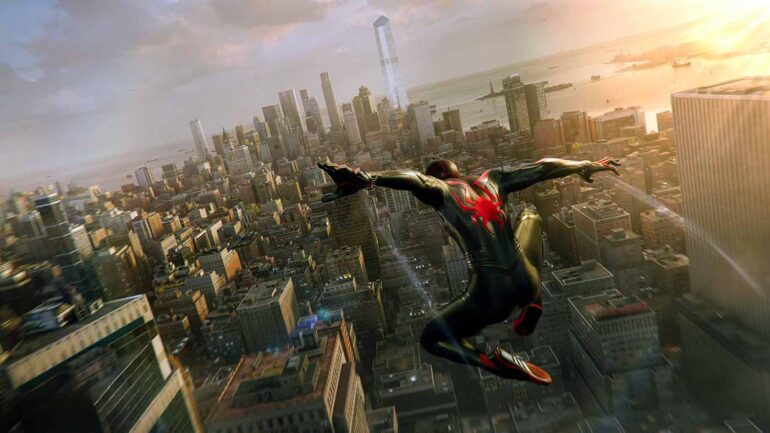With Insomniac’s huge, and hugely-anticipated, superhero sequel, Marvel’s Spider-Man 2 finally out there, we had the opportunity for a very quick chat with the game’s Design Director Josue Benavidez, who’s been visiting Australia to talk about the game at SXSW Sydney.
While there’s a whole heap we couldn’t talk about for fear of spoiling the fun this early, it was great to touch on some of the design decisions that have informed the biggest changes or improvements this time around as well as how the city of New York itself was brought to life.
As someone who’s never visited New York – although I’m literally about to get on a plane and do just that – what are some things that were important to capture about the city outside of just geography or recognisable landmarks?
Josue Benavidez: For us we’ve always considered the city to be one of our characters. And so it was important for us to tell the character of New York. So we do have things in the city that are, you know, landmarks that everyone, around the world will know and they’ll recognise from TV and movies. But then we also have smaller stories that you can find around the city, things that are more related and relevant to the different neighbourhoods. And so there’s lots of little things in there that really tell the story about, you know, what New York is and who the people are that live in New York.
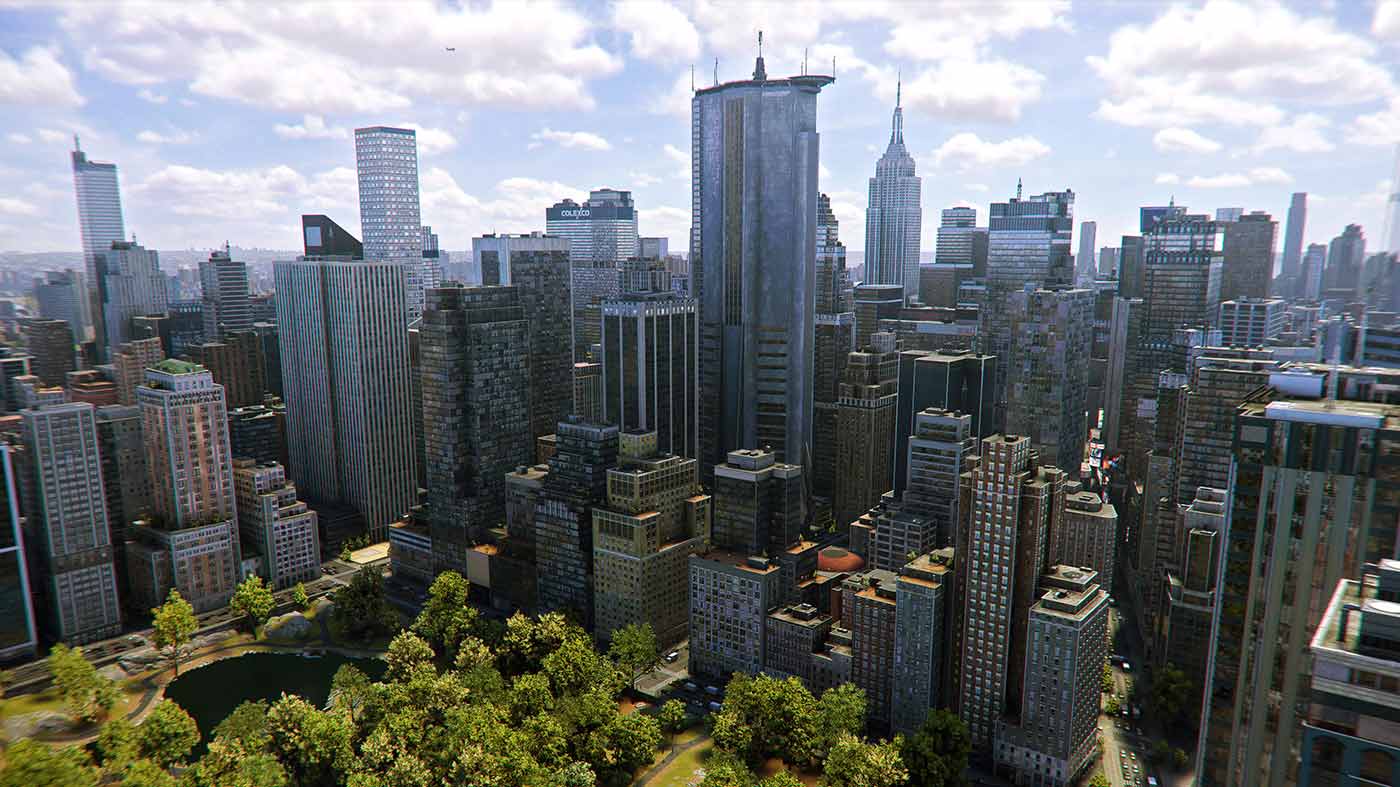
I was surprised at how quickly players are introduced to a traversal tool as powerful as the Web Wings and basically given free reign of the city. What new challenges arose in designing the city to be essentially flown through and over versus the (slightly) more grounded movement in the previous games?
JB: We were really excited to bring the Web Wings into this game. One thing that was really important for us was to make sure that we’ve got new and fun to experiences for players and this game and the Web Wings were just sort of a natural thing for us to add. And they actually work really well with swinging because with the Web Wings, you know, you need height. And so swinging is a great way to get height and the two actually work really well together.
And then because this is a bigger New York, we’ve expanded into Brooklyn and Queens, players need new tools to get across things like the East River or to get around through Astoria. And so the Web Wings are just a great opportunity that allows players to kind of glide over the river and helps players out, and in some of the new areas of the city that don’t have as many tall buildings everywhere.
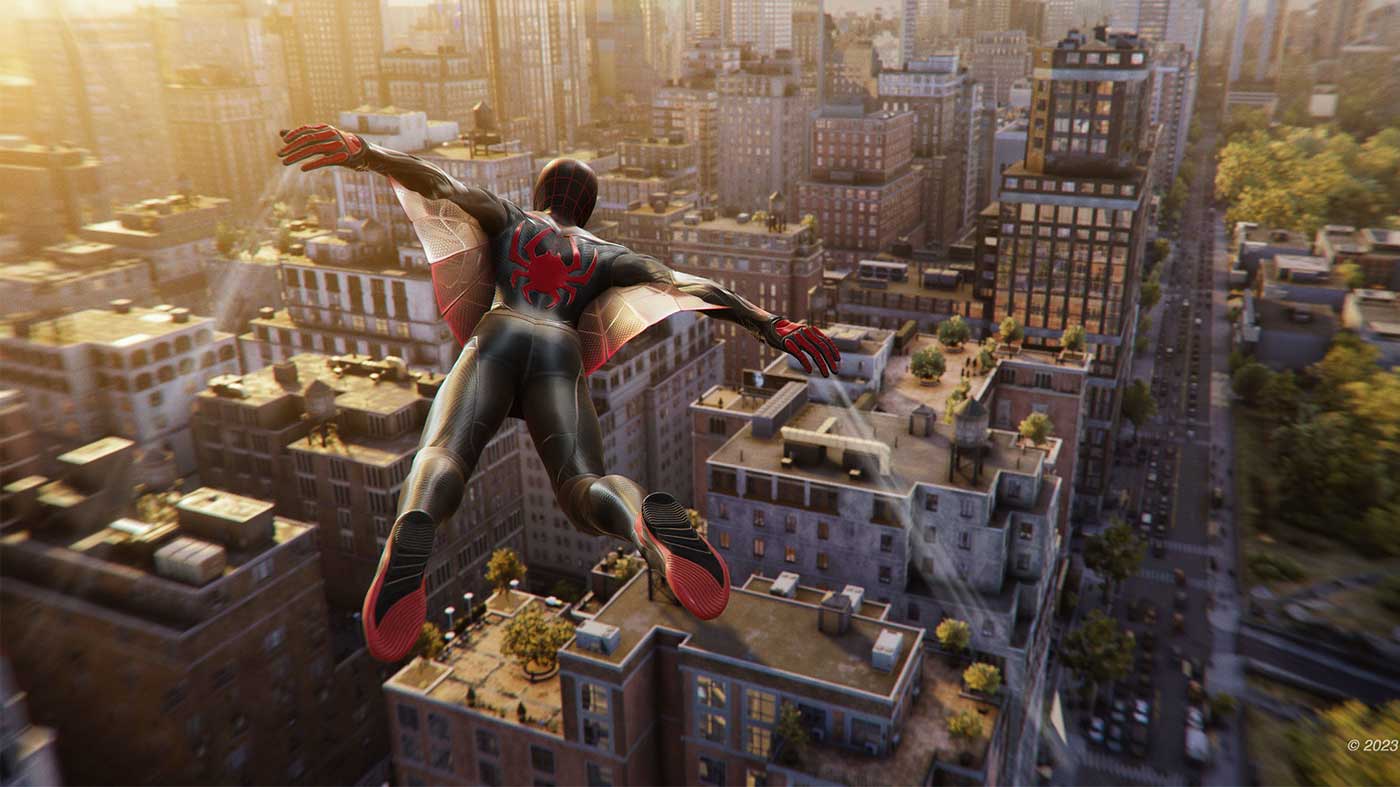
How early on did you settle on how much of the city players would have access to and what kind of creative license does it take to keep players invested in what’s there and away from any boundaries without downplaying that sense of freedom of movement?
JB: Defining the city was one of the first things we did when we started making Spider-Man 2,and we wanted to make sure that we had enough new parts of the city to provide players with new and interesting places to explore. But at the same time we wanted to make sure that Manhattan and the other parts of the city that we have before were, we’d still have the time do revisions on those to make those brand new so that players would have an interesting experience, exploring both Manhattan and the new boroughs of Brooklyn and Queens.
Something I think people will appreciate is that having essentially double the play space hasn’t meant it’s ballooned out in terms of play time or an overload of content. How do you find that balance in an open world game of not adding content for content’s sake but making sure that the play space is still compelling?
JB: Well we’ve never been focused on playtime. We’ve always been focused on delivering the best experience we can and so with everything that we make, we’re focus on trying to deliver experiences to players that they’ll find meaningful. And we want to be able to tell meaningful stories. So for all of our content, we want to make sure that there’s a meaningful arc and a meaningful story that players can find and explore around the city.
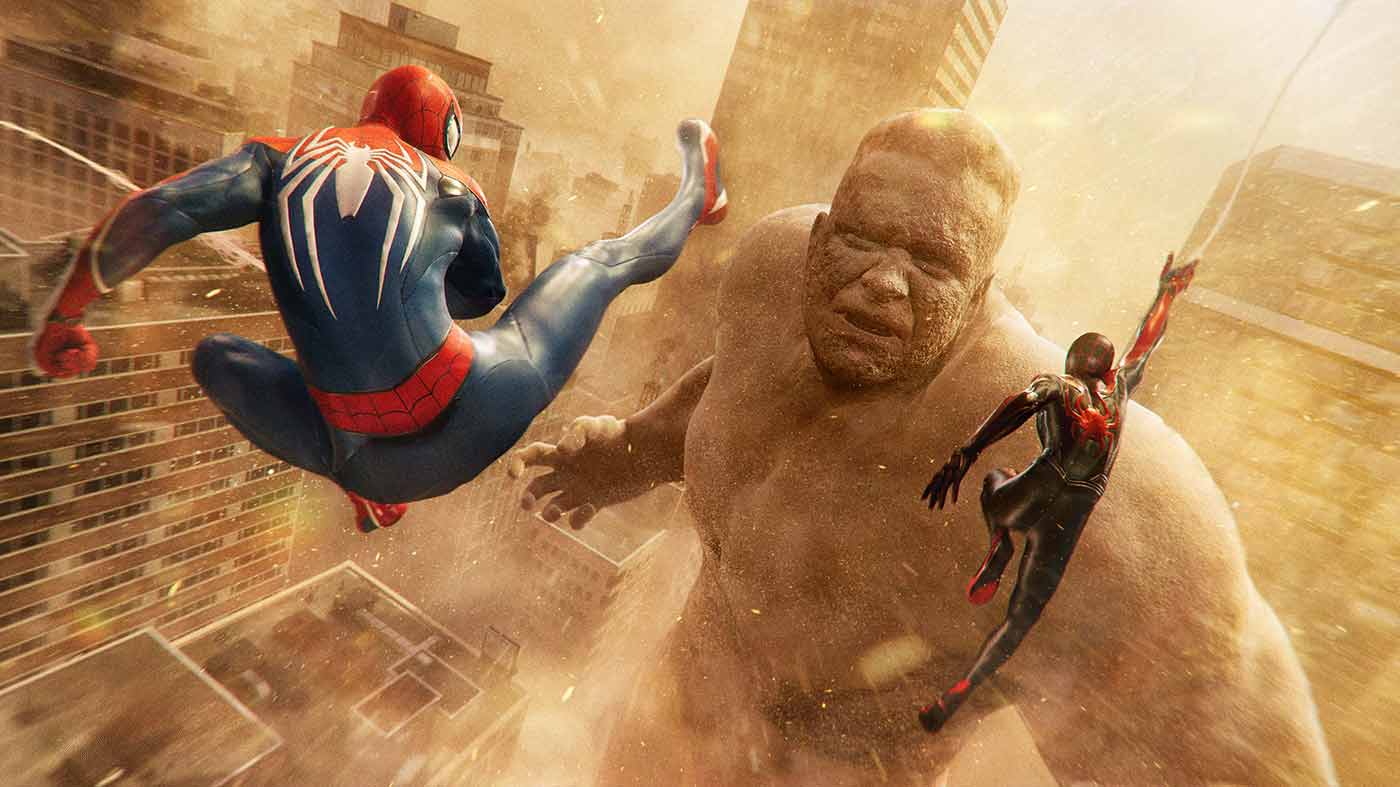
The city of New York in Spider-Man 2 is constantly changing in the aftermath of big events in the story and especially some big battles. How do you balance having this sense of narrative events having a real impact on the city while not betraying players’ expectations of agency in the open world at all times?
JB: One of the things we really wanted to do for this game, is we really wanted to show the impact that major events have on the city. And so that’s why when you play through the game, major missions and battles will have impact and you’ll see the effects of those missions persist through the city, as you play the game. We wanted to also show, like, how does that impact the people, the city of New York? And so we’re always focused on how can we show that impact, how can we show that these events have lasting effects but at the same time, still make sure there’s enough of a city there for players to explore and find new content in.
This time around, you’ve gated fast travel behind each district’s completion percentage in the open world. What prompted that change?
JB: Well, one of the things that we wanted to do with the district progress system is we wanted to provide rewards for completing a completing content in a district, we wanted there to be meaningful reward then we thought one of the one of the cool one cool reward could be was the fast travel system so that was really more of a focus of what’s in a fun reward. We can offer players for sticking around a district and completing content within it.
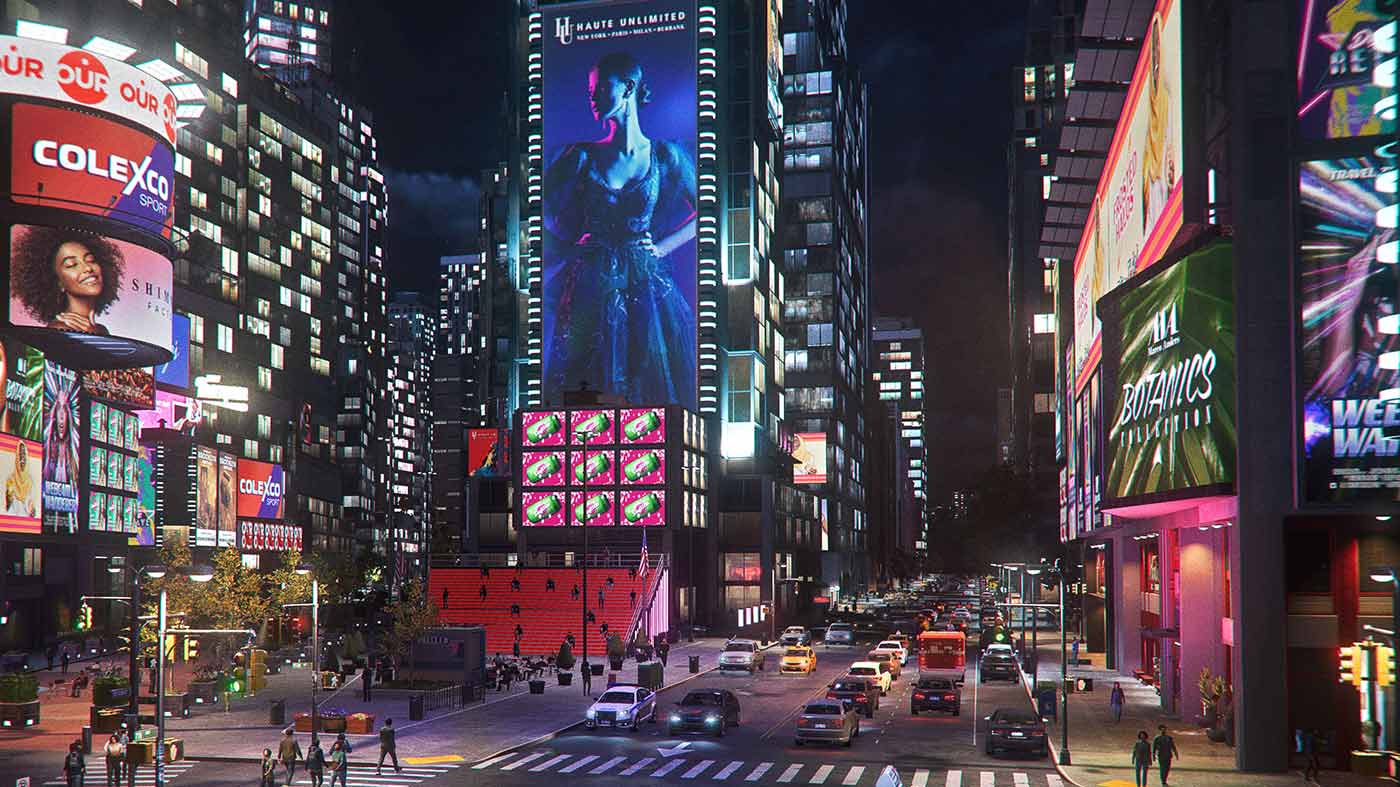
As impressive as it is at scale the game also includes a number of more intimate sequences involving playable characters that aren’t Peter or Miles, like MJ and others. What are some of the challenges in designing these sections so that they feel true to the characters but aren’t disruptive to the core Spider-Man experience?
JB: We were focused on making sure that we were telling the journey of multiple characters and that includes characters that aren’t Peter and Miles. And so when we’re building those segments, we’re really focused, on what’s the story and the journey we want to tell? And then what gameplay can we build that supports that? And we want to make sure that each of these characters has sort of a meaningful journey and that the gameplay is fun and matches that.
It’s incredible the breadth of options that players have in making their experience of the game but just more accessible but also more approachable. What does it take to get to the level of flexibility that’s there in a game this big and varied? What puts Insomniac in a position to be able to do so much in that regard?
JB: Accessibility is something that we’re dedicated towards and is a major focus for us and we’ve even committed to supporting more accessibility features in the future. And really our goal is that we want Spider-Man to be a game for anyone. You know, Spider-Man is a franchise that’s loved the world over and so we feel like our game, Spider-Man 2, should be a game that could be played by anybody. So, the entire team is motivated and dedicated to achieve that goal of making this an experience that all players can play.
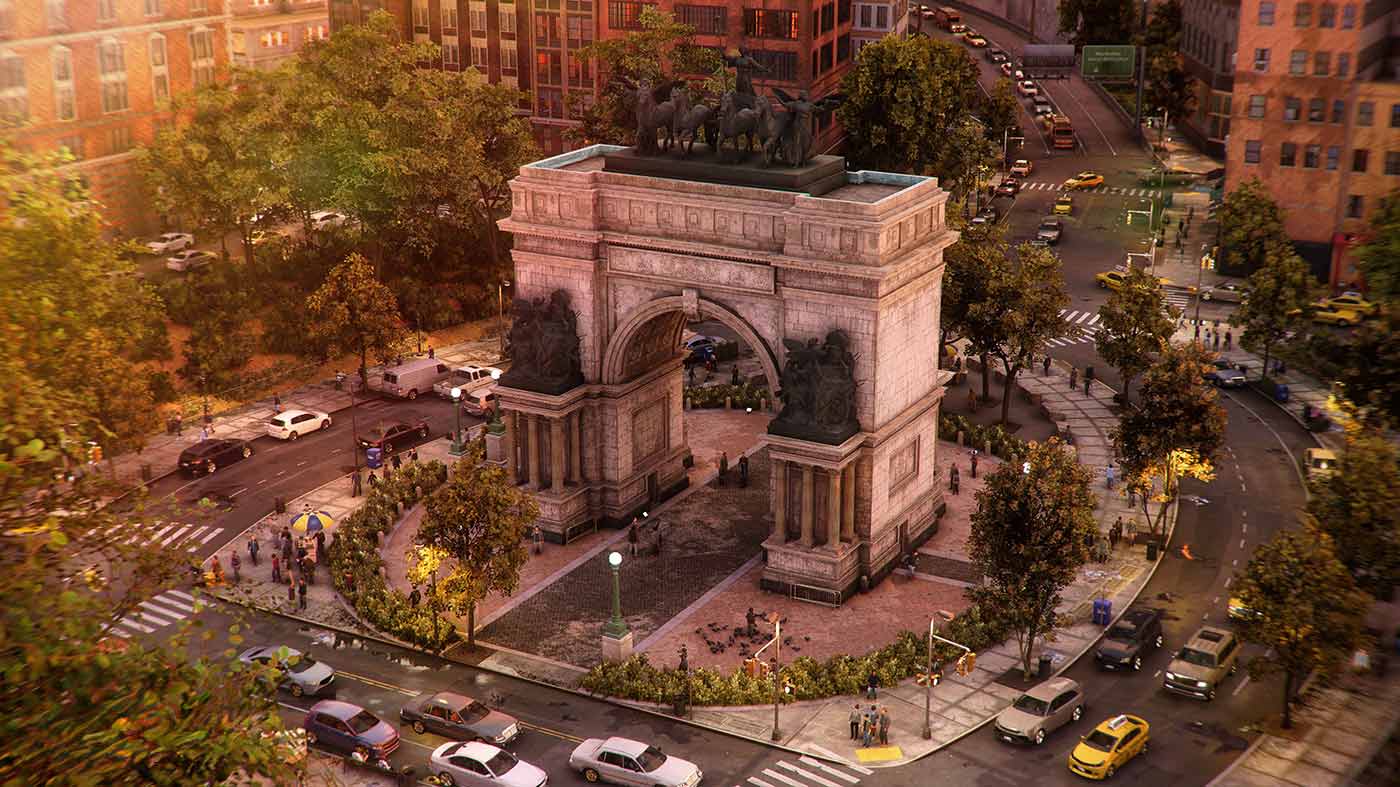
We gave Marvel’s Spider-Man 2 a huge 9/10 in our review, saying “Marvel’s Spider-Man 2 cleverly pairs its added width and breadth with more depth and meaningful new gameplay and story opportunities. There’s rarely a moment here that doesn’t feel thrilling, enchanting, heartbreaking, awe-inspiring or some combination of it all. Beyond untangling the finer threads of its design or narrative ambitions though, it’s genuinely just the most fun, gorgeous open world superhero game out there.”
Marvel’s Spider-Man 2 releases exclusively for PS5 on October 20, 2023. Amazon has pre-orders for $99 with free shipping.


